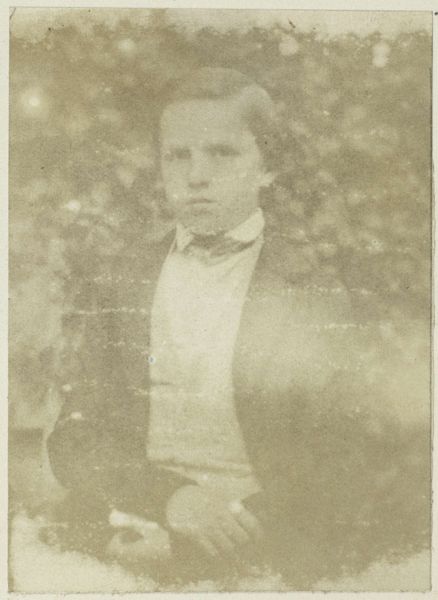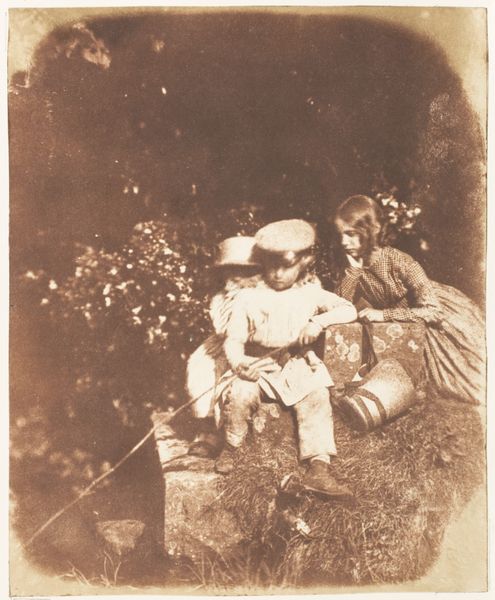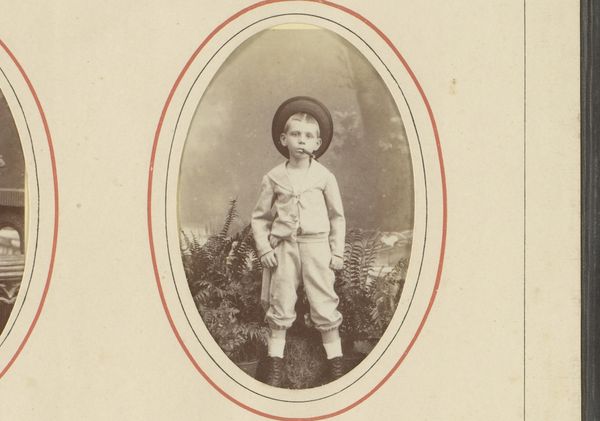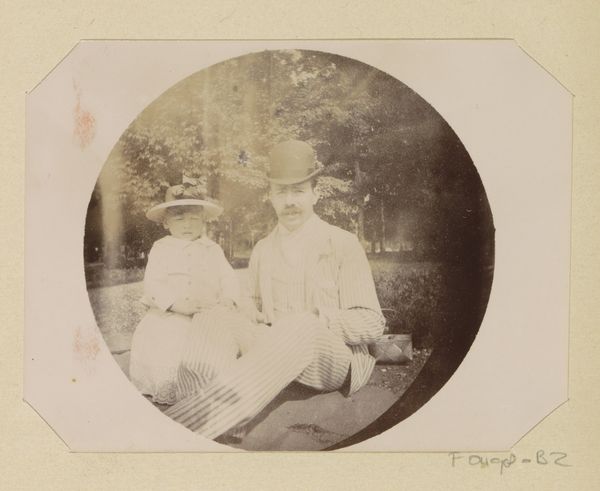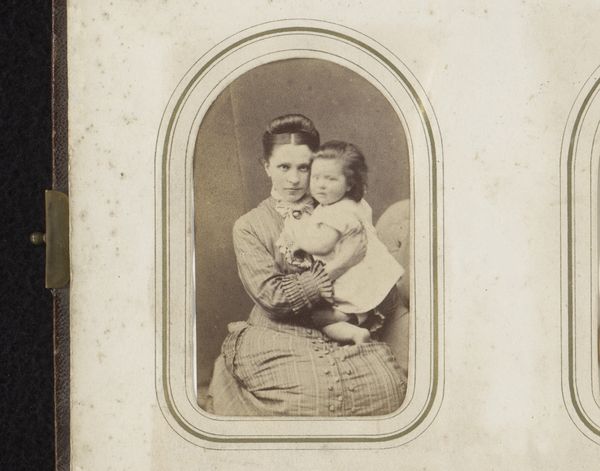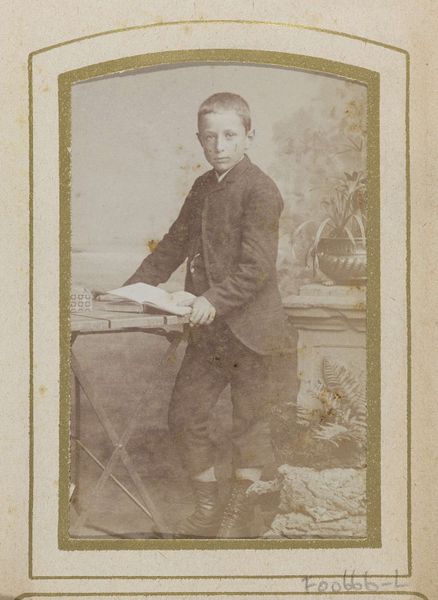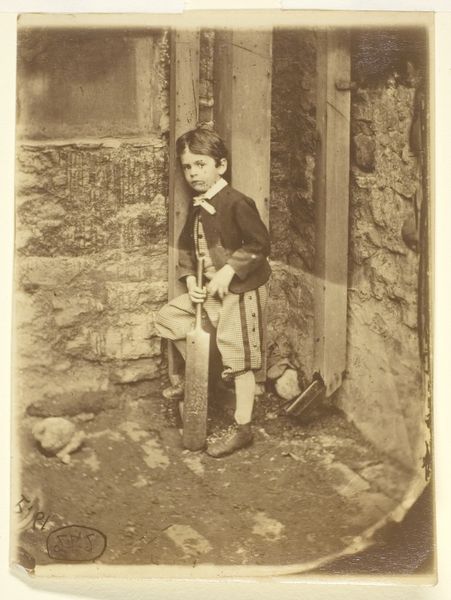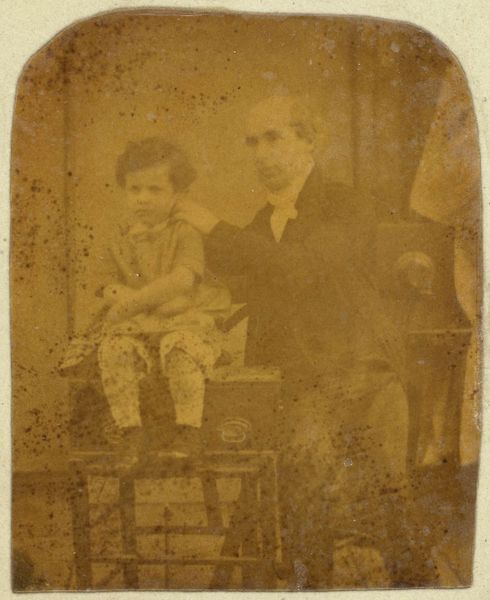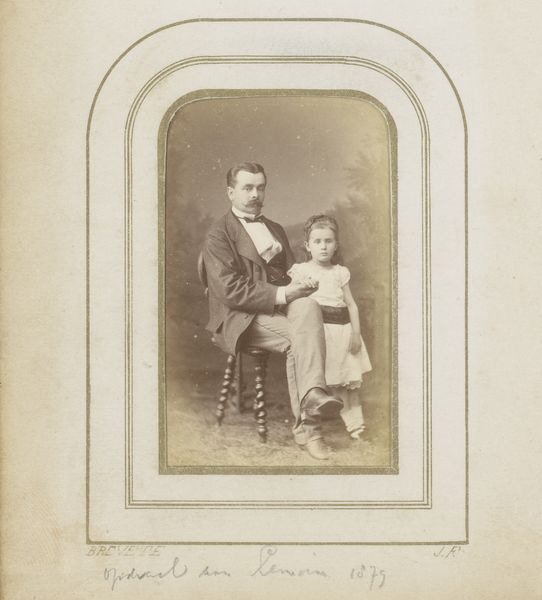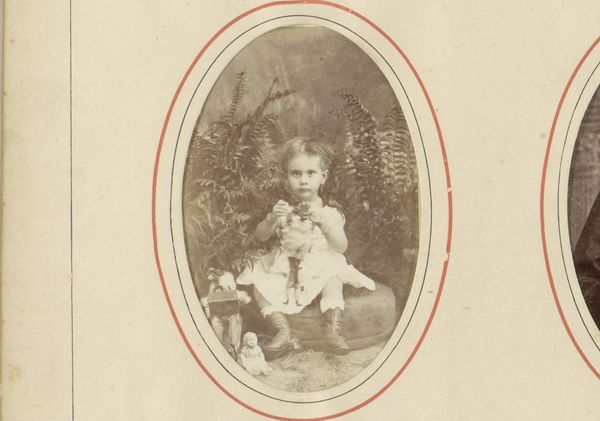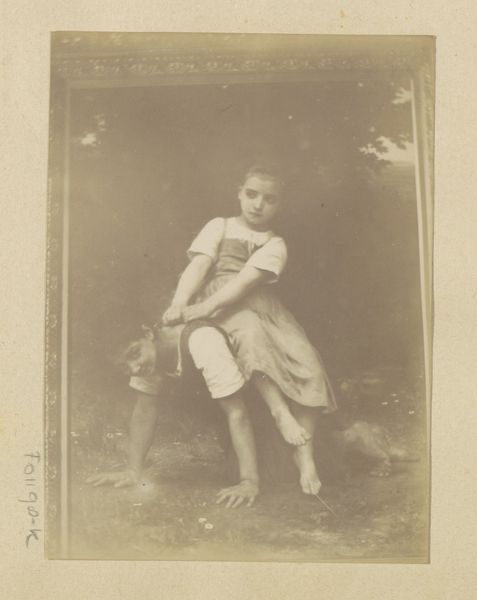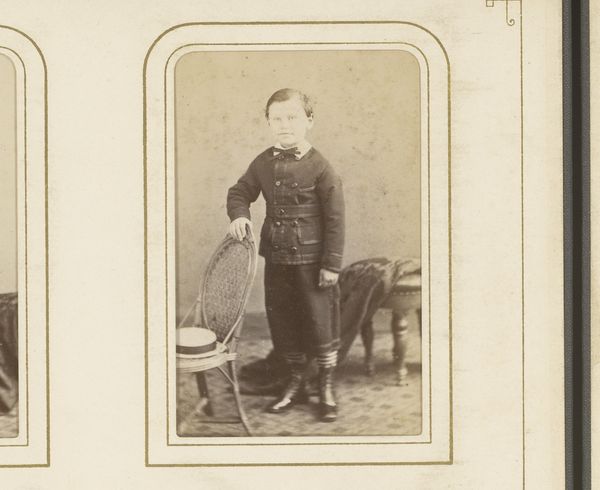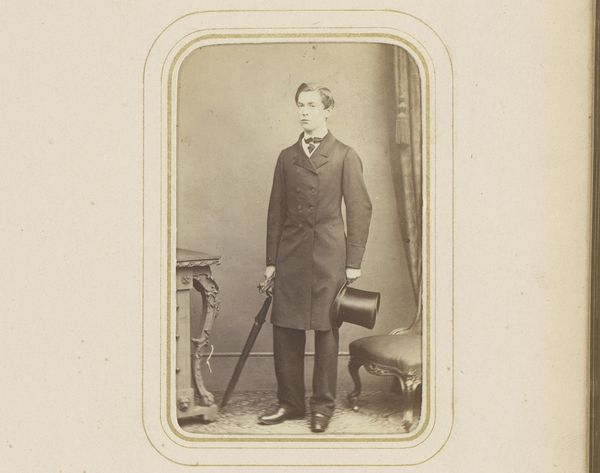
photography
#
portrait
#
photography
#
child
#
men
Dimensions: 9.5 x 7.2 cm (3 3/4 x 2 13/16 in.)
Copyright: Public Domain
Editor: Here we have Thomas Eakins's photograph, "William J. Crowell with Ella," from 1880. It feels incredibly intimate, despite being a formal portrait. What jumps out at you about this image? Curator: Well, let’s consider the social context. Eakins, though celebrated now, faced controversy for his challenges to academic conventions and Victorian prudery. This photo, featuring a man and child nestled amongst overgrown foliage, moves away from sterile studio portraiture. How do you think the setting—the natural world—shapes our understanding of their relationship? Editor: It almost feels like a refuge, away from societal expectations. It is also interesting that there is no pretense here, in the expressions or pose, perhaps it hints at genuine connection. Curator: Exactly. Eakins's commitment to realism can be seen as a challenge to idealized representations prevalent at the time. How does this photographic realism—the seemingly unposed nature of the subjects, the imperfect backdrop—intersect with evolving ideas about masculinity and childhood in the late 19th century? The man has a full beard and seems somewhat stern, but contrasts the soft foliage surrounding him. How might this be interpreted through the lens of gender studies? Editor: Perhaps a critique of the stoic ideal, allowing for tenderness. It makes you wonder about the role photography played in shaping, or even challenging, those norms. Curator: Precisely. Early photography like this was becoming accessible. In which case it holds immense power in documenting social realities and, at times, contesting prevailing ideologies surrounding identity, class, and gender. Editor: So much more than just a portrait! It has really changed the way I view the piece. Curator: Me too. It also underlines the fact that a photograph holds much social data, waiting to be explored.
Comments
No comments
Be the first to comment and join the conversation on the ultimate creative platform.
